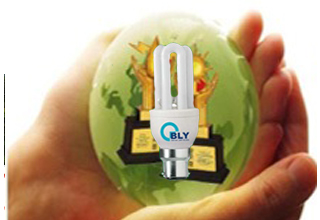BEE to strengthen delivery mechanisms for energy efficiency
Updated: Feb 05, 2014 02:26:43pm

Its flagship scheme – Perform Achieve and Trade (PAT) under its National Mission for Enhanced Energy Efficiency (NMEEE) currently covers 478 units as designated consumers (DCs) from iron and steel, aluminium, pulp and paper, chlor alkali, textile, thermal power plant, fertilizer and cement, according to an official notice.
BEE is now keen to extend the outreach of the PAT scheme to more units. In this context it wants to hire a consultant.
The mission of Bureau of Energy Efficiency is to assist in developing policies and strategies with a thrust on self-regulation and market principles, within the overall framework of the Energy Conservation Act, 2001 with primary objective of reducing energy intensity of the Indian economy. Overcoming barriers for financing of energy efficiency is a key policy goal.
The consultant would have to identify/ deepen the PAT scheme by adding more DCs in already existing 8 industrial sectors in subsequent phases. This will establish baseline specific energy Consumption (SEC) and energy saving potential in the sectors.
Recognizing the fact that efficient use of energy and its conservation is an essential part of India’s goals to mitigate the gap between demand and supply and to promote economic competitiveness, the Government of India enacted the Energy Conservation Act – 2001.
The Act provides for institutionalizing and strengthening delivery mechanisms for energy efficiency services in the country and provides the much-needed coordination between the various organizations and stakeholders, within the Government and in the private sector.
Since the objective of the Act is to promote energy efficiency and its conservation and consequently to reduce the energy cost, selection of industry for the purpose of declaring it, the Designated Consumer under Section 14(e) of the EC Act should primarily take into account- total annual energy consumption in Metric Ton of Oil Equivalent; Energy intensity; and Percentage of Energy cost on total cost, as every designated consumer is always keen to reduce energy consumption as well as energy cost to make its product competitive.
In 2008, Government of India announced ‘National Action Plan on Climate Change (NAPCC), identifying eight missions to promote inclusive growth in the country. The National Mission on Enhanced Energy Efficiency (NMEEE) is one of the eight identified missions under NAPCC.
One of the initiatives under NMEEE is Perform Achieve and Trade (PAT) scheme; which is a market based mechanism having the objective to enhance energy efficiency (target based) in the country with an option to trade the additional energy savings, in the form of energy saving certificates.
Bureau of Energy Efficiency (BEE) under Ministry of Power (MoP) is implementing this scheme in 8 industrial sub-sectors namely- Thermal Power Plant, Aluminum, Pulp & Paper, Chlor- Alkali, Cement, Iron & Steel, Textile and Fertilizer.
For the 1st 3-year cycle of PAT scheme (2012- 2015), 478 designated consumers (DCs) have been notified who would be required to reduce the Specific Energy Consumption (SEC) from their baseline values. The expected energy saving from this scheme is about 6.686 million ton of oil equivalent (million TOE) over this cycle. The over achievers will earn tradable Energy Saving Certificate (e-scerts) whereas under achievers will be liable to comply the same through purchase of e-scerts or paying penalty.
The first cycle of PAT has become effective since 1st April 2012 and eight industrial sectors have been selected in this 1st cycle. In order to further deepen the coverage of PAT scheme, in subsequent phases, it is required to bring in more industrial units under its ambit by increasing the depth of this scheme by modifying the threshold value of energy consumption in already notified 8-sectors to add more new plants under the umbrella of the PAT scheme.
The baseline SEC and potential of energy conservation would be considered to arrive at the energy saving targets for newly added DCs by BEE during the subsequent phases of PAT
The purpose of the proposed study is to –
(i) modify the existing threshold limits of Energy Consumption in respect of 8 industrial sectors, notified in the S.O. 394 (E) dated 12th March, 2007 published in Part II-Section 3-sub section (ii) of the Gazette of India Extraordinary for declaration as Designated Consumers in the 8 sectors under clause (e) of Section 14 of the Energy Conservation Act. 2001 (52 of 2001);
(ii) Identify manufacturing units in the aforesaid 8 sectors which were not included in the list of designated consumers based on the data furnished by some of the manufacturing units which failed to furnish the data correctly by oversight or by any other reason, and
(iii) Identify new manufacturing units in the aforesaid 8 industrial sectors which have become eligible by way of expansion of their manufacturing capacity Since March 2007 or by the Request for proposed revision of threshold limit which could be considered for declaration as Designated Consumers.
The manufacturing units as identified above shall be considered for their inclusion in the next phase of PAT Scheme.
The consultant would have to look into identification of the new industrial units in existing 8 subsectors, which are not covered in the 1st phase of PAT scheme, using information from the industrial units or secondary sources for the threshold limit as defined below:
1) Thermal Power Stations- above 30,000 metric tonne of oil equivalent (MTOE) per year
2) Fertilizer- above 30,000 metric tonne of oil equivalent (MTOE) per year
3) Cement- above 30,000 metric tonne of oil equivalent (MTOE) per year
3) Iron and Steel – above 20,000 metric tonne of oil equivalent (MTOE) per year
4) Chlor-Alkali- above 12,000 metric tonne of oil equivalent (MTOE) per year
5) Textile- above 3,000 metric tonne of oil equivalent (MTOE) per year
6) Pulp and Paper- above 20,000 metric tonne of oil equivalent (MTOE) per year
7) Aluminum- above 7,500 metric tonne of oil equivalent (MTOE) per year
8) Railways- above 30,000 metric tonne of oil equivalent (MTOE) per year
(KNN/ES)












